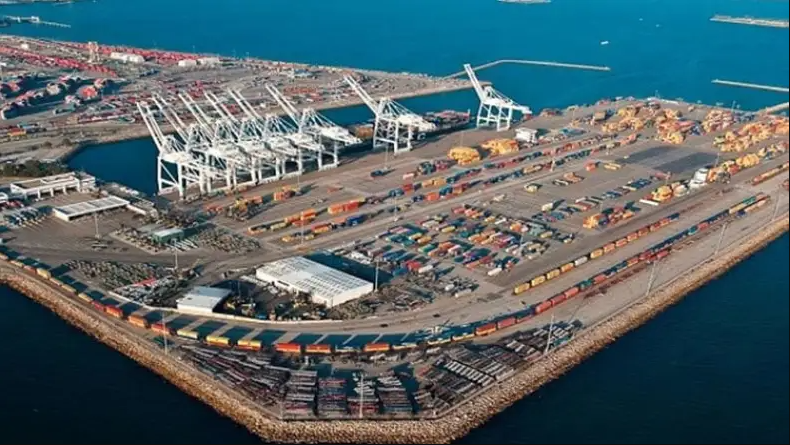
Port infrastructure in Algeria plays a pivotal role in the economy, attracting investments from various countries, particularly Italy. These ports present promising opportunities in the transportation and trade sectors, making them a key attraction for Italian investors.
Italians see these ports as a chance to strengthen their commercial ties with Algeria and are keen on investing in enhancing their capacity and developing their infrastructure. Thanks to their strategic location, these ports facilitate trade with Mediterranean countries, fostering cooperation between the two nations in maritime transport and supporting long-term economic partnerships.
Key Points
- Algeria’s port infrastructure enjoys a strategic geographical position.
- Algerian ports offer numerous investment opportunities.
- The country has a well-developed port infrastructure.
Overview of Algeria’s Port Infrastructure
Algeria’s port infrastructure is a key pillar in supporting trade and investment. The ports provide shipping, export, and import services that stimulate economic activity.
Port Capacity
Port capacity plays a crucial role in the efficiency of infrastructure, positively impacting foreign trade flows.
Major Algerian Ports
Algerian ports are spread along the coast, offering diverse services, including container shipping. The most prominent ones include:
- Port of Algiers
- Port of Oran
- Port of Béjaïa
Current Handling Capacity
Handling capacity is a fundamental factor in boosting foreign trade. Algerian ports offer extensive capabilities in shipping, export, and import operations.
Ongoing Development Projects
According to the Italian news agency Nova, Algeria plans to establish the new Hamdania Port near the city of Cherchell, approximately 70 km west of Algiers, with an investment exceeding $5 billion.
The agency quoted Ugo Cozzani, Vice President of the Italian construction company Condotte, which has strong ties with Cosider, Algeria’s largest construction firm. Condotte has also signed a commercial agreement with the Chinese company CRCCI and may participate in constructing this massive port.
The port will feature 25 berths, with a handling capacity of 25.7 million tons of goods and a high container-handling capacity, positioning it as one of the most significant commercial ports in North Africa.
Major Algerian Ports: Investment Opportunities Attracting Italians
Algeria’s major ports attract significant interest from Italian investors due to the vast opportunities they offer in maritime transport, international trade, and logistics. Algeria, with its strategic location on the Mediterranean, is enhancing its port infrastructure to meet domestic and international trade demands.
Notable Port Projects in Algeria for Italian Investors
- Port of Algiers – The largest port in the country, undergoing continuous expansion to modernize its facilities and increase capacity.
- Port of Oran – A key port on the western coast that encourages investment in maritime transport.
- Port of Cherchell – Part of Algeria’s broader plan to develop port infrastructure in the northern region.
Investment Opportunities
- Port Infrastructure Development
- Industrial and Logistics Zones
- Technology Investments to Improve Maritime Operations
Italian investors, with their extensive experience in the maritime sector, can find lucrative opportunities in these projects, fostering economic cooperation between the two countries.
Available Investment Sectors
- Storage & Shipping
- Maritime Transport
- Logistics Services
Companies can benefit from various competitive advantages while contributing to the development of port infrastructure, enhancing its efficiency and competitiveness.
Competitive Advantages
Italian companies investing in Algeria’s ports can leverage the following benefits:
- Strategic Location – Algeria’s position on the Mediterranean facilitates access to European and African markets.
- Economic Stability – The Algerian government is improving the business environment and offering incentives to foreign investors.
- Developed Infrastructure – Ongoing modernization and expansion projects present opportunities for investment in state-of-the-art facilities.
- Italian Expertise in Maritime Transport – Italian companies bring advanced technology and operational expertise.
- Growing Demand – Increasing trade flows between Algeria and the world drive the need for improved transport, shipping, and logistics services.
- Government Incentives – Algeria provides tax benefits and reductions for foreign investors, making the market more attractive.
Potential Challenges and Obstacles
Despite the vast opportunities, Italian companies investing in Algerian port facilities and logistics may face some challenges:
- Bureaucracy – Complex administrative procedures and delays in obtaining permits can slow project execution.
- Legal and Regulatory Constraints – Labor and tax laws may be intricate for foreign investors, requiring a deep understanding of local regulations.
- Political Stability – Although the business environment is improving, political stability remains a concern for some investors.
- Cultural Adaptation – Language and cultural differences may hinder effective coordination between foreign and local companies.
- Incomplete Infrastructure – While undergoing upgrades, some ports still require further improvements to meet international standards.
- Local Competition – The domestic market is competitive, making it challenging for foreign firms to establish a foothold.
- Access to Capital – Limited local financing and difficulties in securing capital may pose obstacles for large-scale projects.
Conclusion
This collaboration between Algeria and Italy will generate employment opportunities and enhance trade between the two nations. Despite potential challenges, both governments and the private sector are working to strengthen this partnership through joint efforts, contributing to the strategic goals of both countries.
Additionally, this will solidify Algeria’s position as a major logistics hub on both regional and international levels
Frequently Asked Questions (FAQ)
What are Algeria’s main ports?
The most prominent ports in Algeria are Algiers, Annaba, and Skikda.
What is the current handling capacity of Algerian ports?
Algerian ports handle approximately 100 million tons annually, with expansion projects underway to increase this capacity.
What are the competitive advantages of investing in Algerian ports?
Algerian ports boast a strategic location, lower operating costs, and affordable labor, making them attractive to investors.
Timing
Contact
- 0550991783
- Birkhadem, La cote, Algiers
- contact@fadaa.dz
